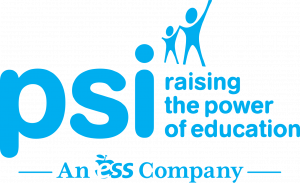The impact of Ohio’s new education laws
For Ohio parents and students the 2023-2024 school year could look very different. Schools will offer more free lunches, more mental health training for staff and more vouchers to cover the cost of private tuition.
Most of those changes will take effect Oct. 3, but some major shifts in education policy and teaching methods will take months or even years. Many districts are starting to retrain their reading teachers, and grants will be awarded this fall to build new career technical centers.
Here’s what you need to know about the changes:
EdChoice scholarships
Starting in October all school-aged children will be eligible for an EdChoice scholarship to cover at least some of the costs of private education. How much families receive will be based on grade level and income.
The most a student can receive this year is $6,165 for kindergarten through eighth grade and $8,407 for high school. These amounts will be available for students with a household income at or below 450% of the federal poverty level. (That’s $78,880 for a family of two or $120,000 for a four-person family.) Here’s the breakdown for those who earn more:
- At or below 500% of federal poverty = $5,200 and $7,050
- At or below 550% of federal poverty = $3,650 and $5,000
- At or below 600% of federal poverty = $2,600 and $3,550
- At or below 650% of federal poverty = $1,850 and $2,500
- At or below 700% of federal poverty = $1,300 and $1,750
- At or below 750% of federal poverty = $900 and $1,250
- Above 750% of federal poverty = $650 and $950
More: Every Ohio child will be eligible for a school voucher but many won’t be able to use them.
Students enrolled in private schools can apply for an EdChoice scholarship, even those who have never attended a public school. And though the law doesn’t officially take effect until October, families who apply before Oct. 15 will receive full scholarship amount(s) for the 2023-2024 academic year. Those who apply after that deadline will get prorated amounts.
More free lunches
Lawmakers also expanded Ohio’s free school lunch program in the state budget. All students who qualify for reduced priced meals − including those at chartered private schools will now get them for free. Districts will continue to qualify students as free or reduced, but their schools won’t collect money for the reduced lunches.
This new rule starts on Oct. 3, but the Ohio Department of Education will reimburse schools that cover their students for the first few weeks, according to an email sent to districts.
Dyslexia screening
Ohio children in kindergarten through third grade will be screened for dyslexia during the 2023-2024 school year. And schools must screen students in grades 4-6 if requested by parents or teachers.
The reason for this change is because dyslexia is a spectrum and advocates suspect many children aren’t diagnosed.
“I would say about 85% of the kids that struggle with reading, they have dyslexia, and don’t know it,” said Mike McGovern, president of the Columbus branch of the International Dyslexia Association.
The initial screening will be short, about five minutes, and it won’t confer a diagnosis of dyslexia, according to the Ohio Department of Education. Instead, the preliminary evaluation will flag children who “may be at risk of reading difficulties such as dyslexia.”
These children will be given additional monitoring and interventions. For many students, this will be enough to get them reading, McGovern said. Others will need additional screening that could lead to a diagnosis and special education.
Science of reading
Ohio’s two-year budget also changed how all students will learn to read, requiring public schools to use phonics-based curricula known as the science of reading.
This was a major priority for Gov. Mike DeWine, who repeatedly told reporters, “There is an actual science to reading, and certain things need to be taught.”
About 40% of the state’s third-graders are not proficient in reading, according to the most recent data from the Ohio Department of Education. And while COVID-19 was responsible for nationwide learning losses, 33% of children fell below that bar prior to the pandemic.
More: Gov. DeWine: Science is ‘abundantly clear,’ some Ohio schools teach reading wrong.
Many public school districts, including Columbus, have already moved to phonics-centered instruction. But for those that haven’t, the change won’t be immediate. Schools don’t have to switch until the 2024-25 school year.
Districts can spend this academic year getting ready. Lawmakers allocated $86 million for teacher training, $64million for new curriculum and $18 million for literacy coaches.
Mental health training for coaches
Ohio became the first state in the country to mandate mental health training for high school coaches when it passed the budget in June.
“It’s about the well-being of these kids,” St. Ursula lacrosse coach Todd Graham said at the time. “What can we do for these young people to help them through this difficult thing that everybody’s going through right now?”
More: ‘It’s about the well-being of these kids,’ Law requires mental health training for coaches.
The Ohio Department of Mental Health is writing the curriculum, and coaches must complete this new training when they get recertified. They can also complete the training “at any time within the duration of the individual’s new or renewed permit.”
Autism diagnoses
Parents who want to use a voucher for a child with autism will have an easier time starting this fall.
The state budget expanded the list of approved ways children can qualify for Ohio’s Autism Scholarship Program. Children can be identified by their school districts, those with Individual Education Plans that “include services related to autism” and students diagnosed as autistic by a physician or a psychologist.
“In short, any student formally diagnosed as autistic now qualifies for the Autism Scholarship,” according to Disability Rights Ohio. “This is a major change that will make the scholarship accessible to many more families.”
Free menstrual products
Public, nonpublic and charter schools with students in grades 6-12 will soon have to provide free pads and tampons. The state operating budget included a $5 million appropriation to install dispensers and buy the menstrual products needed to stock them.
“We have regulated the provision of toilet paper and paper towels in public restrooms, so too we should do the same for menstrual products,” Senate Minority Leader Nickie Antonio, D-Lakewood, said. “It’s unhygienic and a danger actually to one’s health not to have access to menstrual products, so just like toilet paper, we need to have free and accessible access.”
Some districts already offer free pads and tampons to their students, but those that don’t will be able to access those state dollars in October.
Catching the school van
Lawmakers expanded the ways public schools can transport students who choose to attend charter or private schools.
Ohio law requires districts to provide transportation for voucher and charter children, but many districts have struggled to fulfill this obligation−especially since the pandemic. The state even found itself in a lawsuit with Columbus City Schools over an $11 million fine for failing to transport their out-of-district students.
More: Judge blocks Ohio from withholding $11 million from Columbus City Schools.
So, state lawmakers added more flexibility in the budget, allowing schools to use vans and creating a pilot program where regional educational service centers can bus out-of-district students.
Career technical education
Another major priority for the DeWine administration was expanding access to career training centers across the state.
And one of the biggest barriers these schools face, according to Lt. Gov. Jon Husted, is buying the new equipment needed to expand their capacity.
The budget allocated $100 million in career tech equipment grants over the next two years. Priority will be given to centers that support careers on Ohio’s Top Jobs list like electricians and pipefitters.
More college credit in high school
Ohio hopes to train 1,000 high school teachers to teach college courses, and it allocated $6 million to do so.
The teachers will be certified through the state’s College Credit Plus program, which lets students in grades seven through 12 take free college courses that also count toward their high school graduation.
Written by Anna Staver, Legislative Reporter.
Anna Staver is a reporter for the USA TODAY Network Ohio Bureau, which serves the Columbus Dispatch, Cincinnati Enquirer, Akron Beacon Journal and 18 other affiliated news organizations across Ohio.






Leave a Reply
Want to join the discussion?Feel free to contribute!